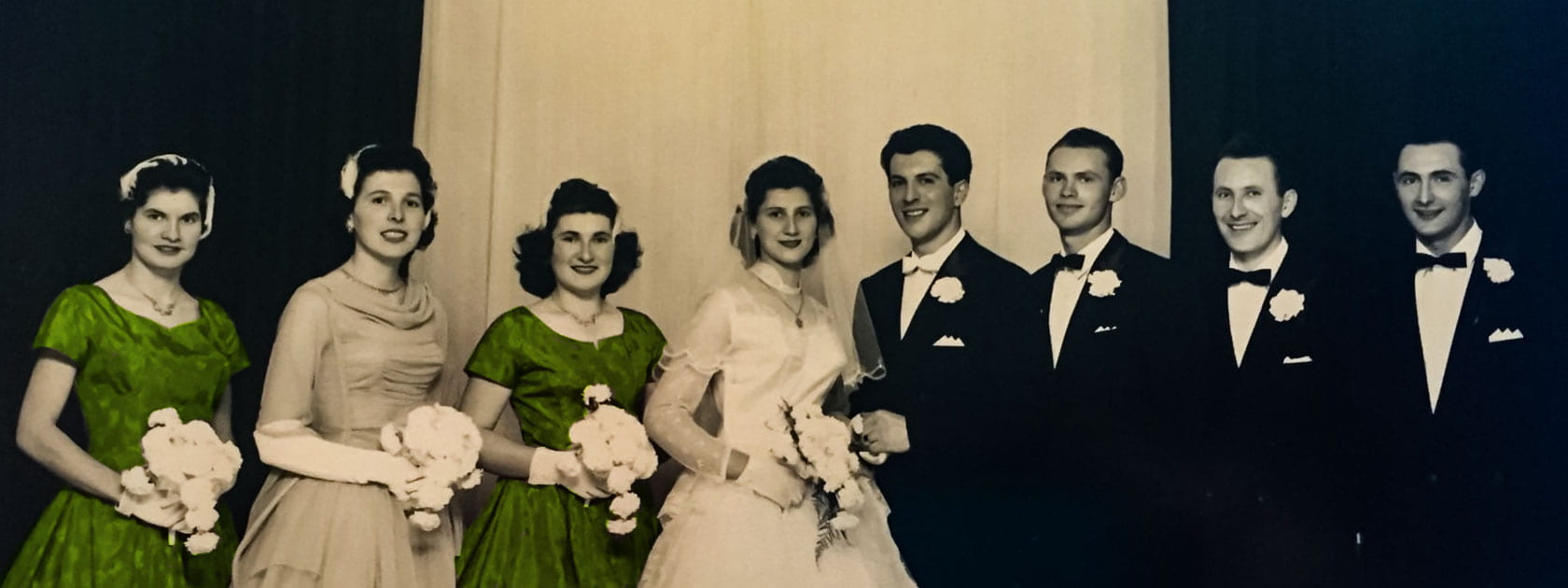
Peter Bosa: From Factory Floor to Senate Chamber (Miroslav Lazic, 2025), research exhibited in class for HUMN3800 (01): Italian Heritage.
Table of Contents
“Immigrant to the Senator: Peter Bosa’s Underdog Story”
Miroslav Lazic
University of Guelph, 2025
INTRODUCTION & OBJECTIVES
The purpose of this assignment is to highlight the story of Peter Bosa, an Italian-Canadian who fought anti-Italian rhetoric and brought about the Canadian professional soccer scene. Through this project, I aim to share his life story —from his early life in Italy to his time as a new immigrant to his career as a Canadian senator. By examining his accomplishments and dedication to the Italian Canadian community, we can honor his legacy and shed light on his role in Canadian history.
This poster was created through thorough research using trusted, credible sources, including government records, a personal biography, and his Senate speeches. The process involves collecting and documenting accurate information about his personal life, his political career, and the influence he had both on the Italian-Canadian community and Canada as a whole. This approach ensures the information is correct and respectful, providing a thorough portrayal of Peter Bosa’s life and career.
ANALYSIS
Senator Bosa’s story began in Friuli, Italy, where he was born in 1927, and his story in Canada began in 1948, when he decided to immigrate following WW2. Arriving in post-war Canada, he began working at his father’s clothing shop as a cutter, and later he moved on to the insurance industry, where he became an executive. This transition from immigrant labor to a business professional illustrates a familiar arc in most immigrant stories: arriving with modest means, and leveraging opportunity, determination, and adaptability to build a new and sometimes better life. In this sense, Peter embodies the immigrant spirit of transformation and contribution.
As his career advanced, he moved on toward public service, first as an alderman for the City of York, Ontario, where he served for seven years. In 1977, he was appointed to the Canadian Senate 1977 as the representative of the division of York-Caboto. Here, his Italian heritage was not sidelined but became a driving force for his public identity. He served as a cultural bridge builder, so to speak, arguing that the strength of Canada lay in the integration of multiple cultures into its national identity. For example, in his opening speech to the Senate, he had said, “One of the things that impressed me most about Canada was the fact that people of different religions and racial backgrounds were getting along so well.” (Peter Bosa, May 6th, 1977). He viewed multiculturalism as a policy and not just an afterthought for the government. Through this lens, his story becomes something beyond just personal success; it becomes a platform from which he became an advocate for a more diverse Canada, not just for Italians but for everyone.
From a more critical perspective, we can examine how Bosa’s run in the senate also reflects the wider politics of multiculturalism in Canada. Namely, how immigrants retain aspects of their home country while actively contributing to and identifying with society as a whole. This stands in contrast to assimilation policies found in places like China, which demand the shedding of your original culture. Similarly, it’s in stark contrast to separatist models that preserve identity but fragment society as a whole (such as the US). Bosa’s beliefs set up cultural heritage as an asset to Canada and its civic leaders rather than a detriment to national identity. However, a critical lens also invites reflection, while Bosa celebrated cultural differences, the reality was that immigration still came with many obstacles (language barriers, racial prejudice, discrimination, etc). These obstacles are often underrepresented in such stories. Bosa’s story is inspiring, but it obscures the obstacles immigrants continue to face even to this day.
Moreover, Senator Bosa’s multicultural advocacy and in representing the Italian community within Canada provides a bridge between his heritage and broader Canadian society. He helped establish cultural recognition (for example, through the Chair in Canadian/Italian studies at York) and ensured that Italian Canadian contributions were publicly acknowledged. At the same time, his appointment and career demonstrate the possibilities of immigrant inclusion in the Canadian political system. He’s shown how someone who immigrated at age 20 could rise all the way to the level of a senator. His life serves as a model for how immigrant communities can both preserve cultural heritage and integrate into the political fabric of Canada.
In conclusion, through the lenses of immigrant identity and multiculturalism, Peter Bosa’s legacy is multifaceted. He was a product of immigration and, moreover, an advocate for the merging of heritage and national identity, and a public servant who actively shaped modern-day Canada’s multiculturalism. His experience as an immigrant is not one of privately adapting to a new country, but a public one of national unity when channeled through civil services and cultural recognition. At the same time, the critical view reminds us that stories like this, while valuable, must come with the understanding that the broader immigrant experience, along with the obstacles that come with it, still exist. Peter Bosa’s life thus makes us consider how immigrant integration and heritage can be integrated into the civic life of a nation like Canada, and how diversity can strengthen, not fragment, that nation.
REFLECTION
At the start of this project, I was originally going to complete an interview where I would speak directly with an Italian Canadian immigrant and get their story. I had some trouble contacting them, but eventually I did and learned that they had to back out. I was pretty disappointed and a little stressed since the work I had done up until then had gone to waste as I pivoted to the Legends project instead. Switching to the poster made me rethink pretty much everything about how I’d approach the assignment; instead of relying on a personal narrative, I had to rely on academic biographies and archived materials. Though at some point in the process, I learned how to adapt to these kinds of sudden changes and ended up learning about an incredible Italian Canadian that I wouldn’t have otherwise.
Looking back on it, I’m a bit upset that I missed the personal connection that comes with interviewing someone (especially since I’m the son of two immigrant parents). The research part of this assignment gave me an appreciation of archivists and how they can give a voice to community history that would otherwise be lost. This project also improved my ability to use the library systems we have at the universities, but moreover, it helped me think critically about cultural identity in Canada and apply it to my parents’ immigrant story. While they’re from Serbia and not Italy, their stories and experiences (especially with integrating into Canadian culture) had a lot of parallels to Bosa’s own story.
RESOURCES FOR EDUCATORS
Bosa, Peter. “Senate Debates.” https://parl.canadiana.ca/view/oop.debates_SOC3002_02/145.
Molgat, Gildas L. “Debates – Volume 137 – Issue 105 – February 2, 1999.” sencanada.ca/en/content/sen/chamber/361/debates/105db_1999-02-02-e
Patterson, Brenda. “Proposed Renaming of Greyton Site Parkette to Senator Peter Bosa Parkette .” www.toronto.ca/legdocs/mmis/2008/ey/bgrd/backgroundfile-15100.pdf
Pietropaolo, Vincenzo. From Factory Worker to Senator: A Biography of Peter Bosa. Club Giuliano Dalmato Di Toronto, 2025.
GALLERY

Year of image: July 5th, 1971. Peter Bosa criticizing the financial aid sent to Italy to assist earthquake victims citing prejudice (Photograph published by the Toronto Star on July 17th, 2014)

Year of image: 08 April, 1977. Peter Bosa (right) meeting with 2 unnamed reporters outside the senate floor (Photograph published by the Toronto Star on September 25th, 2014)

Year of image: 1994. Official Parliament headshot of Peter Bosa (Photograph published by the Canadian Parliament in 2012)

Year of image: 1978. Senator Peter Bosa and Helen Lettieri, dance (Photograph published by the Toronto Star in 2014)

Year of image: 1977. Peter Bosa during his time as York city alderman (Photograph published by the Toronto Star in 2014)


